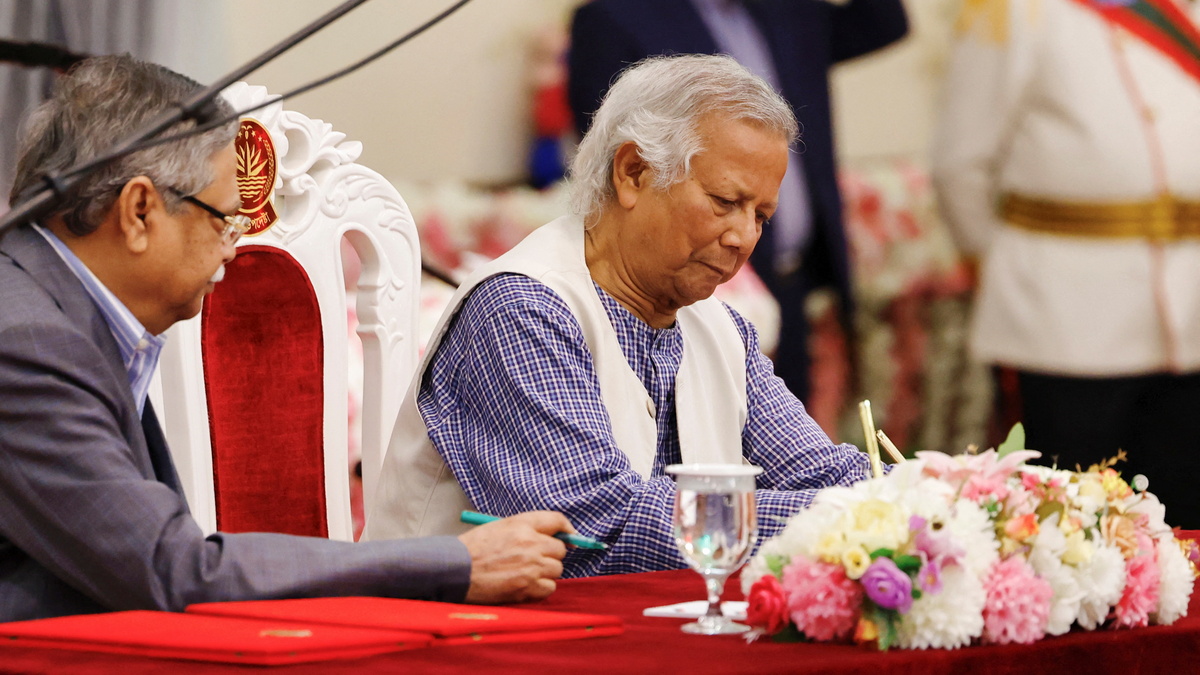Bangladesh now wants to revive the South Asian Association for Regional Cooperation (Saarc).
Bangladesh interim advisor Mohammad Yunus has raised the possibility of doing so with US ambassador-designate to India Sergio Gor.
The development comes a month after Yunus discussed doing so with Pakistan Foreign Minister Ishaq Dar during a meeting in Dhaka. He previously did so with Pakistan’s Prime Minister Shehbaz Sharif on the sidelines of the UN General Assembly in New York last year.
The grouping has remained dormant for nearly a decade.
But why does Yunus want a revival of Saarc? Why isn’t India keen? Let’s take a closer look.
A brief look at Saarc
Let’s begin by taking a brief look at Saarc. The grouping was founded on December 8, 1985, via the signing of its charter in Dhaka.
The bloc aimed at:
Promoting the welfare of the peoples of South Asia and improving their quality of life
Improving economic growth, social progress and cultural development
Increasing self-reliance among South Asian nations
Creating mutual trust, understanding and appreciation of one another’s problems
Working with each other and helping each other in social, cultural, technical and scientific fields
Cultivating cooperation with other developing countries
Increasing cooperation among South Asian nations at international forums on matters of common interest
Working with international and regional organisations with similar aims and purposes.
Its seven original members were Bangladesh, Bhutan, India, the Maldives, Nepal, Pakistan, and Sri Lanka. Afghanistan joined the bloc in 2007. It is headquartered in Nepal’s Kathmandu.
Though the Saarc leaders are supposed to meet annually, the bloc has not met since its previous get-together in Kathmandu in 2014. This is because of tensions between India and Pakistan. The grouping has remained suspended since the Uri attack by Pakistan in 2016 in which at least 17 soldiers were killed.
That year, the Saarc summit was created to be held in Islamabad . However, India withdrew from the scheduled meeting – followed by Bangladesh, Bhutan, and Afghanistan, leaving the meeting cancelled. Since then, not a single Saarc summit has been held. However, Nepal continues to hold informal meetings of Saarc foreign ministers.
Why Yunus wants a Saarc revival
For Yunus, Saarc is critical to increasing regional cooperation and connectivity. Yunus in August 2024 called for reviving Saarc for “enhanced regional cooperation in an effort to boost economic cooperation in the South Asian region”. He said it could be a “model of relationships like the European Union”.
“We must work together for mutual benefits,” Yunus added.
This comes in the backdrop of Bangladesh’s economy continuing to struggle in recent years . In 2023, the World Bank described Bangladesh as one of the world’s fastest-growing economies. “Since its independence in 1971, Bangladesh has transformed from one of the poorest countries to achieving lower-middle income status in 2015,” it said.
However, the country had also witnessed a sharp widening of its current account deficit, depreciation of the taka currency and a decline in its foreign exchange reserves. It has consistently struggled with high inflation and low growth recently. The International Monetary Fund in June released $1.3 billion (Rs 0.11 lakh crore) to Bangladesh following the fourth review of its $4.7 billion (Rs 0.41 lakh crore) loan programme and a breakthrough in talks on exchange rate reforms.
Yunus, an economist and Nobel Peace Prize winner, in January said that his country’s high growth under Hasina was “fake”. Yunus has repeatedly claimed that reviving Saarc could benefit the entire Southeast Asia region. Yunus in September 2024 said a revival of the “spirit of Saarc” could solve many of the region’s problems.
“The Saarc summit has not taken place for quite a long time. If we come together, a lot of problems will be resolved,” Yunus said.
Bangladesh has also struggled amid increased pressures from the Rohingya influx after a brutal military crackdown in Myanmar’s Rakhine State. Yunus at the time had said Bangladesh would seek help from China and India on how to manage the crisis and convince Myanmar to take back its people. He repeated the remarks at a meeting with the Saarc Secretary General in December.
“SAARC is a forgotten word. If you can revitalise it, this will give dividend to the people of the whole region,” Yunus told Secretary General of Saarc Golam Sarwar in Dhaka.
Bangladesh under Yunus has been looking to improve ties with Pakistan via a number of moves including visa-free travel, re-establishing maritime links between the two countries after nearly five decades, lifting restrictions on the import of Pakistani goods and placing a defence order with Pakistan – moves which sparked concerns in India.
Why India isn’t keen
India, however, is likely to pay Yunus’ remarks little heed. This is because India was unhappy with the role Pakistan played – essentially as a spoiler – within the bloc. India has noted how Pakistan, when Saarc was ongoing, obstructed key trade agreements including the Saarc Motor Vehicles Agreement. New Delhi has said that Islamabad’s actions impeded the efficacy of the grouping.
The past few years have also seen the ties between India and Pakistan nosedive. Islamabad cut off relations in 2019 after India revoked Article 370 that granted special status to Jammu and Kashmir and split it into two Union Territories. The Pahalgam terror attack in April 2025 followed by India’s Operations Sindoor in May further ratcheted up tensions between the two countries.
India has instead looked to alternative platforms such as the Bay of Bengal Initiative for Multi-Sectoral Technical and Economic Cooperation (Bimstec), of which Pakistan is not a member, to promote regional cooperation.
However, some argue that given the situation in the world today, New Delhi cannot afford to ignore Saarc entirely. It remains to be seen how India reacts to Bangladesh’s plea to revive the bloc.
With inputs from agencies
)